Discover 11 hidden attractions, cool sights, and unusual things to do in Nuneaton (United Kingdom). Don't miss out on these must-see attractions: Nuneaton Town Hall, Our Lady of the Angels, and Riversley Park. Also, be sure to include Astley Castle in your itinerary.
Below, you can find the list of the most amazing places you should visit in Nuneaton (England).
Table of Contents
Nuneaton Town Hall
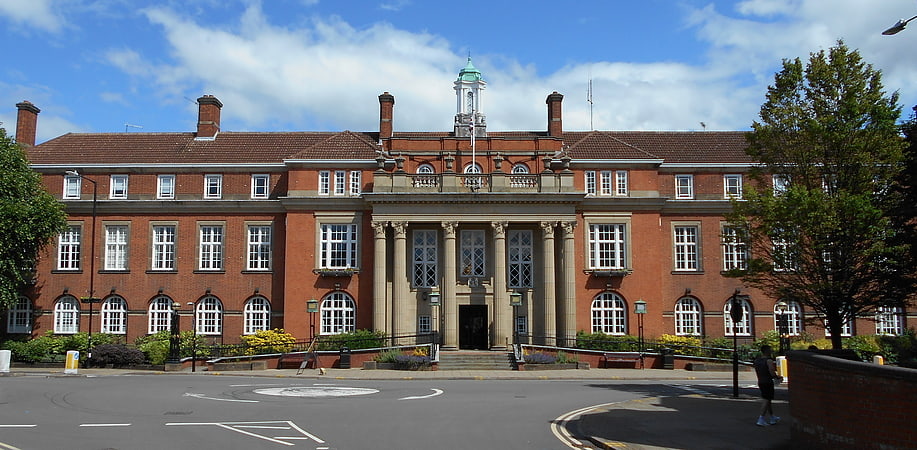
Nuneaton Town Hall is a municipal building on Coton Road in the town of Nuneaton, Warwickshire, England. The building is the headquarters of Nuneaton and Bedworth Borough Council.[1]
Address: Coton Road, Nuneaton
Our Lady of the Angels

Catholic church in Nuneaton, England. The Roman Catholic Parish of Our Lady of the Angels is located in Nuneaton, Warwickshire, England. The parish is part of the Roman Catholic Archdiocese of Birmingham and a part of the Rugby Deanery. The current Parish Priest is Fr. Simon Hall. Working alongside the diocesan clergy are a group of Presentation Sisters.
It is one of two parishes serving the town, the other being St. Anne's. Originally, it was the Parish Church for the whole of the town, until 1948 when the aforementioned Parish of St. Anne's was created out of it. Today the Parish of Our Lady of the Angels covers Nuneaton town centre and the surrounding areas of Caldecote, Weddington, St. Nicolas Park, Horeston Grange, Whitestone, Attleborough, Chilvers Coton and Stockingford.[2]
Riversley Park
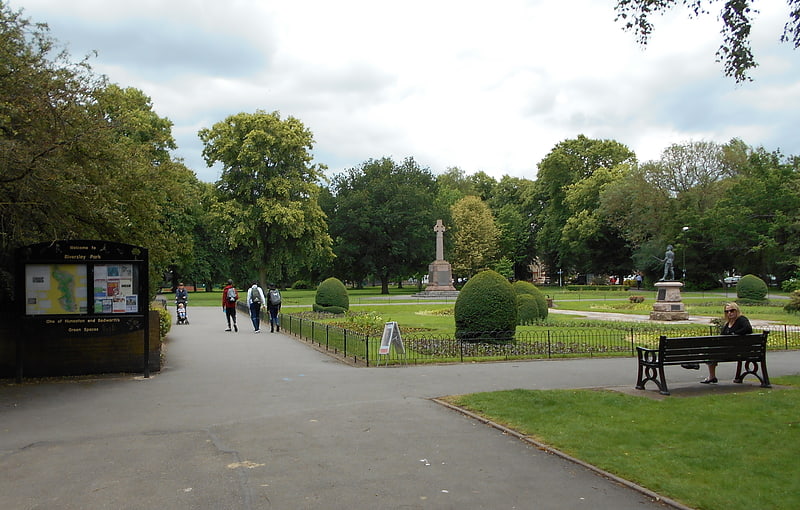
Park in Nuneaton, England. Riversley Park is an urban park in Nuneaton, Warwickshire, England, which covers an area of 13 acres and is located immediately to the south of the town centre, with the River Anker flowing through it.[3]
Address: Coton Rd, Nuneaton
Astley Castle
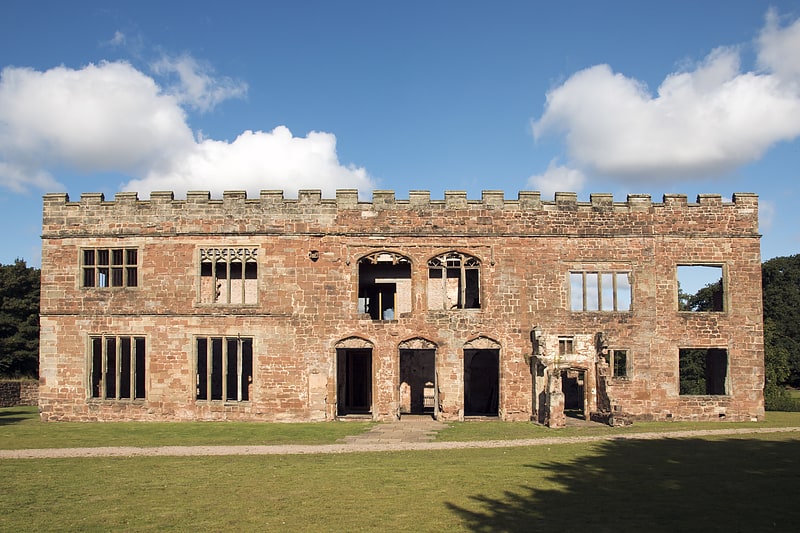
Housing. Astley Castle is a ruinous moated fortified 16th century manor house in North Warwickshire. It has been listed as a Grade II* listed building since 1952 and as a Scheduled Ancient Monument since 1994. It was derelict and neglected since it was severely damaged by fire in 1978 whilst in use as a hotel and was officially a Building at Risk. The building reopened as a holiday let in 2012 after extensive and novel renovations that combine modern elements within the renaissance remains. In 2013, Astley Castle won the Royal Institute of British Architects Stirling Prize for architecture, as an "exceptional example" of the blending of an ancient monument with modern architecture.[4]
Address: 1 Church Lane, CV10 7QD Nuneaton
Hartshill Castle

Hartshill Castle is a ruined castle in the village of Hartshill on the outskirts of Nuneaton, Warwickshire. It is on Historic England's Heritage at Risk Register due to erosion, structural problems and vandalism.
It was built as a motte and bailey castle in the 12th century by Hugh de Hardreshull in 1125. Robert de Hartshill was killed alongside Simon de Montfort in the Battle of Evesham in 1265 and the castle fell into disuse. In 1330, it was rebuilt by John de Hardreshull.
In Tudor times a timber-framed manor house was built into the corner. Now all that remains of the house is a chimney. The earthworks of the castle and remains of the house are still present. The site is privately owned. In Tudor times after the Battle of Bosworth, King Henry VII is believed to have stayed at the property.
No other place in Warwickshire has such evidence of continuous habitation since earliest times as this Hartshill/Oldbury Ridge.
Stone Age tribes lived here in 10,000 B.C. They were nomads, not travelling far, but wandering, always returning to this area for flints which they needed for tools and weapons. They found them in the boulder clay at the foot of Hartshill Ridge, near the River Anker. Remains of Stone Age flints and bones of Red Deer and Woolly rhinoceroses have been found in sand and gravel near to the river at Witherly.
So over centuries Stone Age and Bronze Age people, Romans, Saxons, Danes and Normans all stamped a way of life on this area.
In the Domesday Survey of 1086 Hartshill is known as Ardreshill. Thirteen families lived here at a time when tracks through the forest were deep and difficult to find.
Hugh De Hardreshill was given the manor in 1125. It was he who built the first defensive system: a motte and bailey (a mound and enclosed yard) here on this castle site, overlooking Atherstone. The walls were made of wood and on top of the motte was a wooden tower which was home to the Lord of the Manor and his family, as well as being a look-out post.
The first stone building at the castle was the chapel, built in the 13th century. Little of this remains above the ground. A hundred years later the wooden palisades of the bailey were replaced by stone walls 4 feet thick and 15 feet high, pierced with cross-loops in sandstone.
A section of water-filled moat remains on the west side. The north door survives and there are traces of the west door, but no indication above ground of the main entrance which would have been on the south side. It is likely that there would have been a tower in the south-west corner.
A later Tudor house was built into the north-east corner about 1560, but of this only the south-east chimney stack remains. The rest of the house, with its timber frame and wattle and daub walls, was demolished in the 1950s.[5]
Abbey Theatre
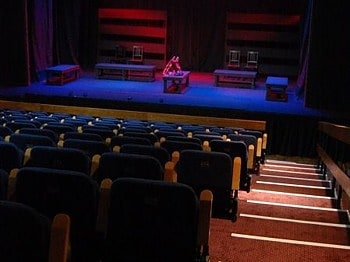
Theatre in Nuneaton, England. The Abbey Theatre is situated on Pool Bank Street in the Abbey Ward of Nuneaton, England, and is managed and run by volunteers by the Nuneaton Arts Council.
The venue hosts performances including visiting theatre companies, touring shows, musicals, pantomime and drama, dance, comedy and film screenings.
The theatre's manager is Tony Deeming. It is run as a charity by Nuneaton Arts Council. The theatre's charity number is 259613.
With a regular annual attendance of over 30,000, the Abbey is the only public theatre in Nuneaton and one of the busiest venues in Warwickshire.[6]
Address: Nuneaton, Pool Bank Street
St Paul's Church
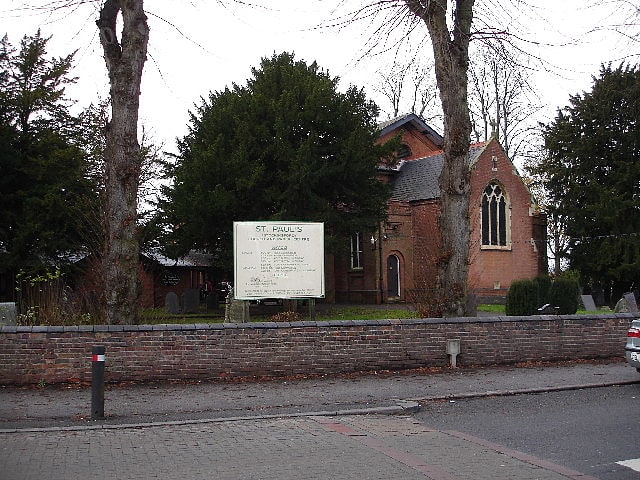
Church in Nuneaton, England. St Paul's Church, Stockingford, is a Church of England parish church in Nuneaton, Warwickshire, England. It is part of the Diocese of Coventry.[7]
Nuneaton Priory
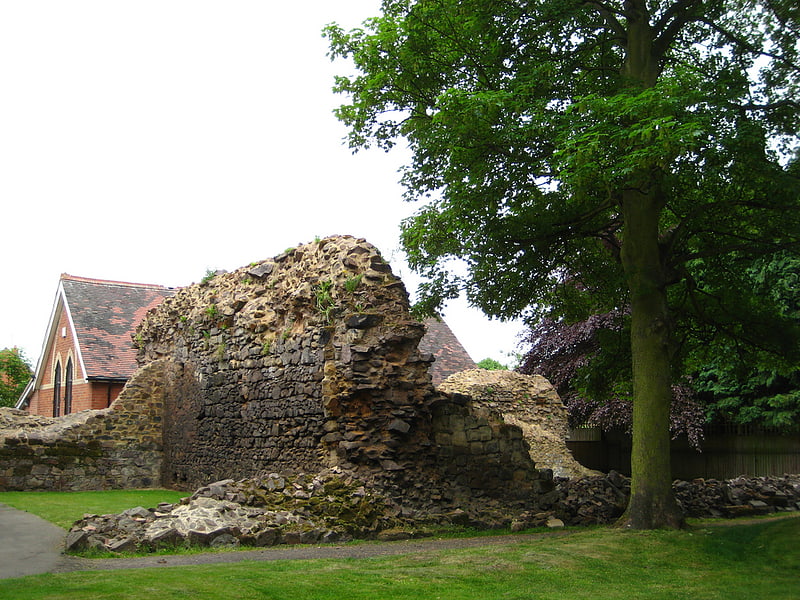
Abbey. Nuneaton Priory was a medieval Benedictine monastic house in Nuneaton, Warwickshire, England. It was initially founded by Robert de Beaumont and Gervase Paganell in 1153 at Kintbury in Berkshire as a daughter house of Fontevraud Abbey in France. Soon afterwards, in around 1155 the foundation was moved to Etone in Warwickshire, which subsequently became known as Nuneaton.
Nuneaton Priory must have become "denizen", that is, a naturalised English monastery, around the time of the suppression of the alien priories, since there was a prior of Nuneaton still in 1424 and other mentions are then found.
At various moments, the women's house at Nuneaton was large, containing 93 nuns in 1234, 89 in 1328, but the Black Death will have taken its toll and in any case the house numbered 46 nuns in 1370, about 40 in 1459, only 23 in 1507 and at the end, in 1539, 27 in total, of whom 25 were granted pensions. The 1535 Valor Ecclesiasticus, Henry VIII's pre-seizure survey, showed a net annual income for the priory of some 253 pounds.
The seal of Nuneaton Priory depicted the Virgin Mary in the pose of the Seat of Wisdom (Sedes sapientiae), which was a common motif for seals of nunneries in medieval England, though not the majority choice. The motif entails a depiction of the Blessed Virgin seated and facing forward, presenting or holding the Christ Child on her lap.
The nunnery was seized in 1539 during King Henry VIII's Dissolution of the Monasteries, and subsequently fell into ruin.[8]
Arbury Hall
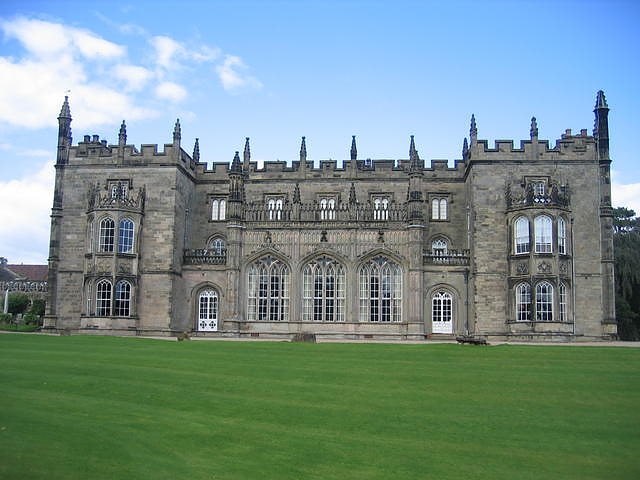
Historical landmark in Nuneaton, England. Arbury Hall is a Grade I listed country house in Nuneaton, Warwickshire, England, and the ancestral home of the Newdigate family, later the Newdigate-Newdegate and Fitzroy-Newdegate families.[9]
Nuneaton Museum & Art Gallery
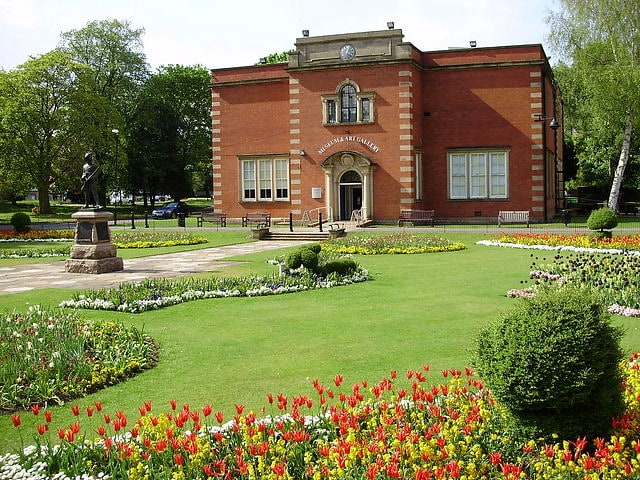
Nuneaton Museum & Art Gallery is set in the grounds of Riversley Park, Nuneaton, England, and has three galleries which house regularly changing temporary and touring exhibitions. There is a gallery dedicated to the writer George Eliot, together with two others focusing on local history and fine art. There is a small display of objects which belonged to the comedian Larry Grayson.
The museum was paid for as a gift to Nuneaton from Edward Ferdinand Melly. The son of Charles Pierre Melly, Edward Melly was born on 7 July 1857, at Riversley, the family's house in Mossley Hill, Liverpool. He moved to Nuneaton to work as Manager of the Griff Colliery Company. In 1913 he offered to provide the money to build a museum and gallery in Riversley Park which he had already gifted to the town and had plans drawn up. The Museum & Art Gallery opened on Sunday, 1 April 1917.
In 1941 a bombing raid resulted in Melly's death and significant damage to the building. Since many records were lost, knowledge of the origins of the museum's collection is now sometimes lacking. The gallery was not fully reopened until 1960.
Nuneaton Museum and Art Gallery is open Tuesdays to Saturdays 10.30am to 4.30pm and Sundays 2pm to 4.30pm. The museum is closed Mondays but open on Bank Holiday Mondays 10.30am to 4.30pm.[10]
Address: Riversley Park Coton Road, CV11 5TU Nuneaton
Mount Judd
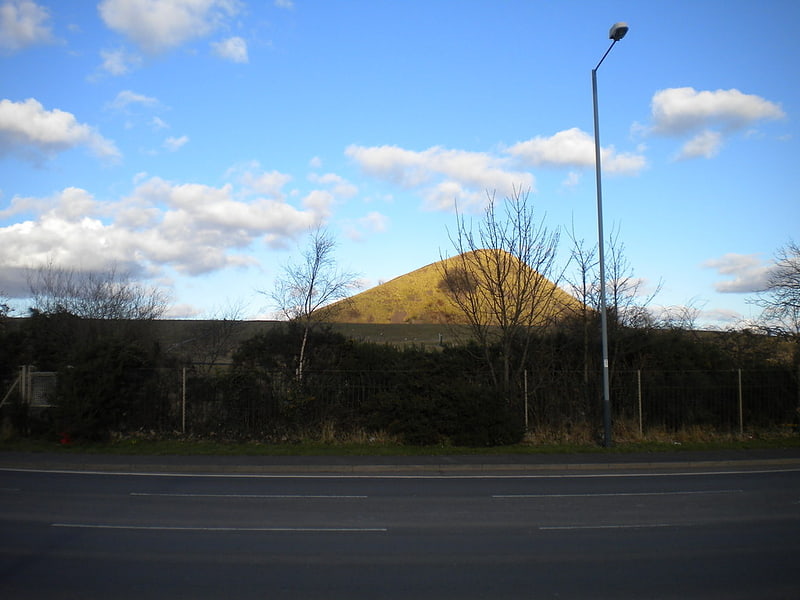
Mount Judd is a man made hill and landmark in Nuneaton, Warwickshire, England.
It is the former spoil tip of the Judkins Quarry, which extracted granite in the area. Mount Judd is a famous local landmark and in 2018 was voted the United Kingdom's "best landmark" in a Daily Mirror poll. At 158 metres (518 feet) altitude it is the 3,306th highest hill in England.[11]